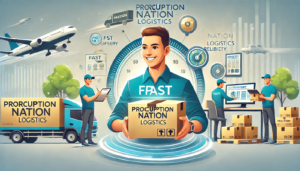Unveiling Geöe: The Next Big Thing in Digital Transformation

https://hunterposts.com/
With technology being rapidly integrated into various aspects of the economy, new ideas and innovations come up, which may alter the structures of industries and how people communicate with technology. Among them, such an interesting term as ‘geöe’ is getting people’s attention now There is still much to talk about Geöe and it will be the topic of this blog post, where I will consider the background, uses, and possible implications of using Geöe in different spheres.
Understanding Geöe: Practice Question 2
To provide an understanding of the problems of Geöe before beginning to examine them deeply, one should first understand what this term means. Although currently vague and still in its developmental stage, many view Geöe as an even higher evolution of geographic information, or GIS, and Artificial Intelligence AI. It integrates with location intelligence with complex artificial intelligence algorithms to provide superior expertise and answers. The name ‘Geöe’ is a portmanteau of the words ‘Geo’, which stands for earth/ geographical and ‘Öe’, that represents the amalgamation of skill and technology.
The Evolution of Geospatial Intelligence
Previously used mainly in military and intelligence sectors, the definition of geospatial intelligence and its application has expanded to include civilian uses.
Getting back to GEOINT, it needs to be mentioned that it has been effectively used for different industries over the years. GEOINT has been instrumental across the defence, planning and Mapping and disaster preparedness across the defence, planning, Mapping and disaster preparedness domains. With the help of the modern techniques like satellite data and image acquisition, remote sensing and Geographic Information Systems (GIS) the collection, analysis and utilization of geospatial data have been made easier than before. Though, with the use of Geospatial intelligence combined with AI, a new gen is beginning that is known as Geöe.
Traditional Uses of Geospatial Intelligence
As an initial hypothesis, the familiarity with geospatial intelligence of practitioners coming from traditional GIS and remote sensing background is confirmed.
-
Military and Defence:
GEOINT has played a very important role in military actions, responses and operations; used for situational awareness, conceptual planning, surveillance and reconnaissance. This aid assists in mapping out potential threats, observing enemy formations, and even studying the likely effects of climactic events on military action.
-
Urban Planning:
Geospatial data is therefore important to urban planning because it provides important reference points to professionals who are planning and managing urban environments. The knowledge gained through GEOINT helps in the management of population and structural demands for sustainable urban growth and the assessment of the overall influence of cities on the environment.
-
Disaster Management:
To further illustrate, in natural disasters, GEOINT helps in evaluating the aftermath, addressing aspects of emergency response, and even in structuring for reconstruction. These include giving specific and detailed information on the affected regions that will assist authorities in their decision-making processes.
Geöe and AI Conclusion
AI applies or a variety of uses across different sectors by supporting the use of automated processes, the decision making process and identification of distinctive patterns in theinformation set. However, when used in conjunction with GN, AI techniques are beneficial for analyzing vast quantities of data relevant to geographical locations to deliver more comprehensive interpretations and forecasting. This combination of technologies effectively from the basis of Geöe and provides completely unique potential.
AI-Driven Enhancements in Geöe
-
Predictive Analytics:
Through refining the algorithms, AI models can accurately anticipate future trends and incidence based on geographical data collected in the past. For example for general land usage, Geöe can predict the population increase, traffic flow, and changes in environment so that authorities can lay down infrastructure and supply resources with due regard.
-
Real-Time Data Processing:
Using AI technology, Geöe analyses and filters large amounts of incoming geospatial data in real-time from satellite images, social media platforms, and IoT sensors. This capability also helps to effectively respond to emergencies, improve disaster preparedness and management within the communities, and improve public security.
-
Advanced Pattern Recognition:
Being an artificial intelligence, Geöe can process a larger volume of data and find predefined correlations that can be extremely difficult to detect even by experienced analysts. This capability comes in handy, particularly for organizations such as Geöe that need to assess lab results, soil properties, climate patterns, and crop health in order to implement suitable farming methodologies.
Examples of Geöe’s Integration in Various Sectors
There is a huge potential of the use of Geöe that ranges to several industries and horizontals revolutionizing the way data locations are managed.
Healthcare and Public Health
Thus, in the sphere of healthcare, Geöe can dramatically transform the character and approach to the disease tracking and prevention. Collection and analysis of disease-geospatial data including disease incidences and vaccination, as well as demographic information such as population density help authorities to locate areas most at risk and respond verbally with resources . In addition, in cases of pandemic situations, Geöe can always respond instantly with updated numbers in relation to infection rates which can then help curb the epidemic and influence the causal illnesses.
Environmental Conservation
There exists a vast potential for environmental conservation efforts to harness Geöe at its best. Combining geospatial information with AI enables scientists to analyze deforestation, study favorable territories for wildlife living, and identify the effects of climate change. Such information is highly useful for coming up with mechanisms aimed at conserving the species and eradicating environmental harm.
Transportation and logistics
Geöe also enjoys advantages in transport and communication more than other regions in logistics. Using statistical analysis of traffic flows, meteorological conditions and routes infrastructure Geöe being able to plan more efficient transport routes, minimize delivery time and improve the management of the whole fleet. This leads to cost efficiencies, increased productivity, and less harm to the earth or ‘G Eaton’.
Retail and marketing
In the retail segment where Geöe is operational, it can revolutionize the marketing angle by giving ideas about consumption pattern and tendencies regarding specific locational area. These key areas can help the retailers to see the popularity of each area and also they can use the data to target promotional messages to certain geographic areas or to select the optimum store locations. This approach increases customer interactions and sales because the company is able to provide products and services that meet a particular need.
Smart Cities
Smart cities are a concept that involve Great deal of geographic intelligence as well as AI. Therefore, Geöe can have a powerful potential to perform as a dissemination tool to support the development of sustainable and efficient urban layouts. On energy efficiency and waste management, pilotless public transportation and safety, Geöe delivers the informed solutions that are key to creating progressive, interconnected urban environments.
Data privacy and security
The authors highlight the following emerging trends in geospatial data integrated with AI: The limitations of data privacy and security are weak. In particular, it remains critical to set up and enhance data protection frameworks and legislations that will help to strengthen people’s confidence and ensure their right to privacy.
Interoperability and standardisation
The following are prospects that will enable Geöe to work across several sectors and areas efficiently Interoperability and standardization of geo information are vital. The integration of the service providers into one entity of knowledge and expertise shall further convince Geöe to accept the implementation of common data formats, protocols, and standards to enable the integration and enhance the completeness and usefulness of data as a critical resource.
Technological Advancements
Sustained technology progress in the Artificial Intelligence (AI), Machine Learning and Geospatial Technologies will shape the future of Geöe. Technologies like edge computing, the 5G networking, and sophisticated satellite networks will strengthen and transform Geöe into a more effective and open source.

Conclusion
The Convention Precursory to Embracing the Geöe Revolution
Geöe is a major advancement in the direction of incorporating the use of both geographical intelligence and artificial intelligence. Geöe holds the capability of empowering different sectors through place-centric data and sophisticated artificial intelligence. From the medical services that require cost-effective patient positioning and accurate diagnosis to the environmental protection in terms of preventing or mitigating pollution, or existence of smart cities that could benefit from real-time data of numerous interconnected devices, Geöe solutions are diverse and address multiple industries and problems.
Given the contingencies of the most heated themes of the modern digital world, the inclusion of Geöe will not only help to open a fundamentally new direction for the development of a convenient and well-grounded environment for decision-making but also contribute to the creation of new opportunities for the formation of a single and implemented world. For more information visit this site https://hunterposts.com/ .








